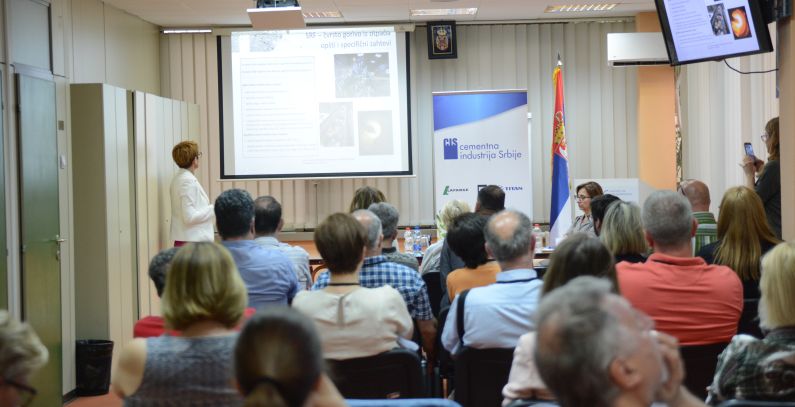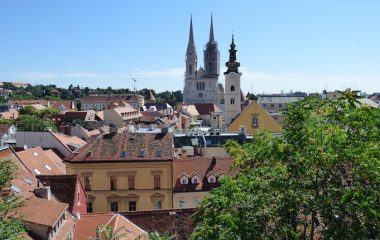
Photo: Serbia’s cement industry
Serbia’s cement industry is interested in co-processing significant amounts of different types of waste, which would reduce imports of fuel and would have a significant positive impact on the environment, according to a workshop organized by the Association of the Cement Industry of Serbia (CIS) and the Institute for Standardization of Serbia (ISS).
The workshop titled Solid Municipal Waste – Energy from Waste was organized to discuss the potential of cooperation between the cement industry in Serbia, the waste industry and the Ministry of Environmental Protection of the Republic of Serbia on managing municipal waste and reducing CO2 emissions by using alternative fuels.
The workshop was attended by waste management experts from various institutions, organizations and the business community, who exchanged their experience on waste-to-energy possibilities in Serbia and discussed required standards that need to be met concerning waste preparation and processing.
According to Dejana Milinković, director of the Association of the Cement Industry of Serbia, waste co-processing not only has significant positive effects on the environment but is also in the cement industry’s interest, as cement production requires energy sources with a high calorific value, and if domestic refuse derived fuel (RDF) is not used, there is a strong need for imports of coal or processed waste.
“The cement industry significantly contributed to the disposal of solid municipal waste in the past period. Serbian cement producers are currently co-processing about 60,000 tons of waste annually as a source of energy and about 320,000 tons of waste as raw materials and are ready to make their capacities available for the treatment of significant amounts of different types of waste in a safe and controlled way, without a negative impact on the environment,” said Milinković.
RDF can be classified into five categories according to its physical and chemical characteristics. Dragoslava Stojiljković, professor at the Faculty of Mechanical Engineering in Belgrade, presented the national required standards for RDF and its key technological characteristics. Stojiljković noted that the fourth category RDF has the same calorific value as domestic lignite, but lower emission levels, making it clear that the replacement of fossil fuel with this alternative fuel is beneficial from the technological aspect as well.
Waste utilization as an example of circular economy
Waste utilization in the cement industry is an excellent illustration of the circular economy model: the mineral content of waste is recycled as a raw material for the production of clinker – the main ingredient of cement, the organic fraction of waste is used as an energy source, and the overall result is a reduced amount of waste deposited at landfills.
“Waste management is the one of the biggest weaknesses in the Serbian environmental protection system, in terms of waste sorting, recycling, and utilization. The cement industry in Serbia has been recognized as an important partner for solving key problems,” said Vladica Čudić, coordinator for market, technical and regulatory support at PWW Ltd in Niš.
Speakers from the ISS, which co-organized the gathering, included Tatjana Bojanić, acting director, and Mirjana Mirković-Đorđević, head of the safety, protection and environment division, who highlighted the importance of standards for determining parameters of environmental quality, ways to use materials, products, and energy, and production processes and products and services derived from these processes.
They presented results, challenges, and expectations for the improvement of the waste-to-energy system by harmonizing with the technological, economic and social circumstances in order to coordinate the interests of environmental protection, economic development, and corporate social responsibility.
Members of CIS are all three Serbian cement producers: Lafarge Serbia, CRH Serbia, and Titan Cement Factory Kosjerić. Waste was first used as fuel in the Serbian cement industry in 2008. Since 2010, CRH Serbia has also treated solid non-hazardous waste, using it for its own needs following treatment, while Titan Cement Factory Kosjerić has not yet begun with waste utilization.
Locations of cement production plants are uniformly distributed on the territory of Serbia, which is an additional advantage for waste utilization, considering possible transportation savings.
In her closing remark, Milinković noted that the establishment of a waste management system on the national level requires a more intensive cooperation between relevant institutions in the public and private sector and the cement industry.


















Be the first one to comment on this article.